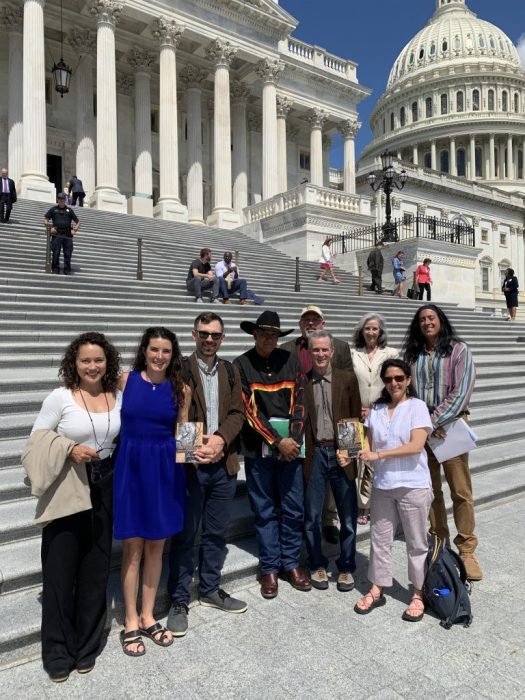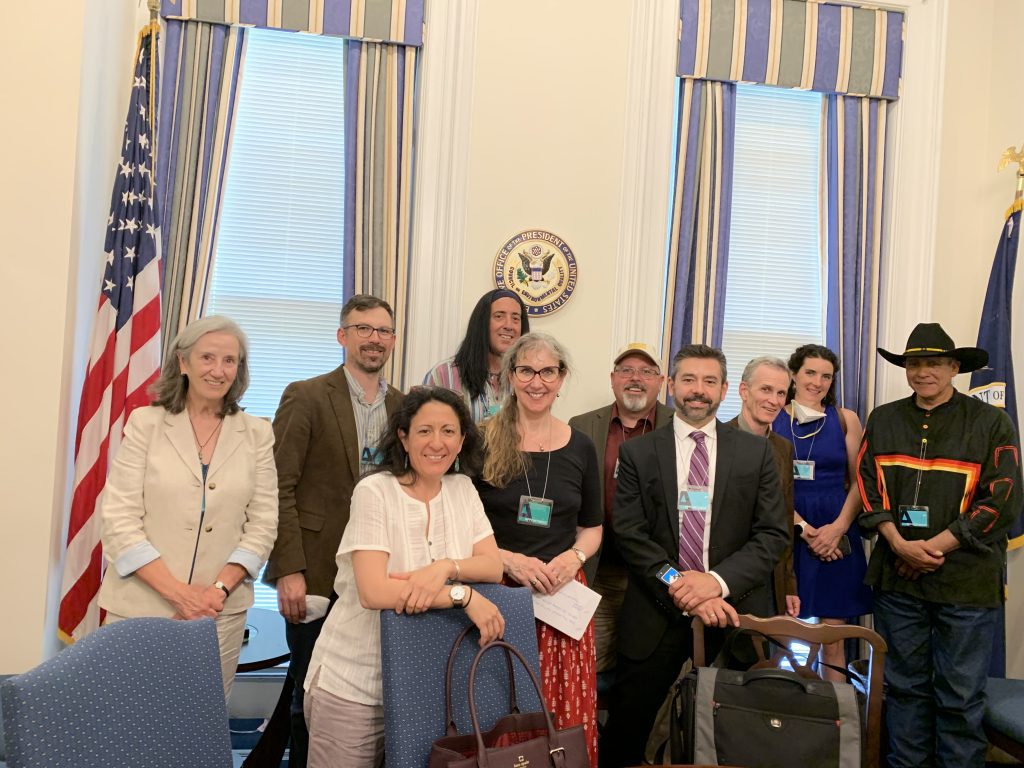“The most interesting challenge we have is finding our place on this planet. If we want wilderness and wild places, it will not be an accident.” I keep thinking about this quote from Michael P. Berman’s piece “Learning to Fall,” from the anthology First & Wildest: The Gila Wilderness at 100, just published by Torrey House Press. Earlier in the essay, Berman articulates a synonymous relationship between the words “interesting” and “dangerous” as they pertain to his adventures in the Mongolian Gobi Desert. It’s true, I suppose, that what’s dangerous is often interesting, and sometimes what’s interesting might also be dangerous.
Having just returned from Washington, D.C., where we held an event to celebrate the launch of First & Wildest, I feel certain we conveyed what’s unequivocally interesting about the Greater Gila: its population of lobos, its wild, free-flowing river, its sacred ties to the Chiricahua Apache, its Gila trout, its size, its Leopoldian legacy. But I’m less sure we adequately expressed what’s so dangerous about failing to protect it.
Let me back up a moment.
In early June, WildEarth Guardians and eight contributors to First & Wildest, in addition to a few community members from the Greater Gila region, visited our nation’s capital to deliver the book to lawmakers and tell them what’s so special about the Gila and why we need to protect it. The impetus for the book is the upcoming centennial of the designation of the Gila Wilderness, this country’s first, on June 3, 2024. As with any birthday celebration, broad recognition of what’s interesting about a person or a place should be the primary focus. AND I’d suggest, for any of us who pursue a trajectory of growth and change, a healthy dose of reflection and introspection is also appropriate for any anniversary. So let’s ask some questions we might ask of a dear friend, family member, or ourselves on this 98th commemoration of this nation’s first Wilderness: What are we doing that’s not serving the greatest good of the Greater Gila? What habits or patterns do we need to shift to reach our goal of intact, biodiverse ecosystems within the Greater Gila? Are we engaging in any activities that endanger the Greater Gila’s health and wellbeing?
So often in the world of conservation, we dwell in the dynamic space of what’s both interesting and dangerous. We’re excited by advocating for systems change and paradigm shifts in the state and federal agencies that govern how public lands and waters are managed. We lean into hard conversations about what’s at stake if we fail. And with respect to the Gila, there’s so much to praise and celebrate, so much that captures our interest. And there’s also so much to lose, so much that’s imperiled, so much that’s in danger. As Berman observed, “If we want wilderness and wild places, it will not be an accident.”
In his essay, Berman concludes, “It is going to take a lot of hard work, and most of the work will involve things that fall apart.” That sounds like a dangerous prediction. And also an interesting one. We cannot afford to await some fiat of political will that protects the wilderness and wild places of the Greater Gila. So we’ll keep treading through the House and Senate buildings of D.C. We’ll continue to sit in front of members of the president’s Council on Environmental Quality and tell them why we love the Gila. It’s hard work, and sometimes it does fall apart. But when the alternative is witnessing the death by a thousand cuts that will come for the Greater Gila should our current (mis)management mandate of multiple (extractive) use continue, we’ll risk the fall.
For the latest on our campaign to protect the Greater Gila, check out our updated website.
And if you love the Greater Gila as much as we do, take action here to protect it!

The “First & Wildest” crew on the steps of the U.S. Capitol.
Like what you just read? Sign up for our E-news. Want to do more? Visit our Action Center.
